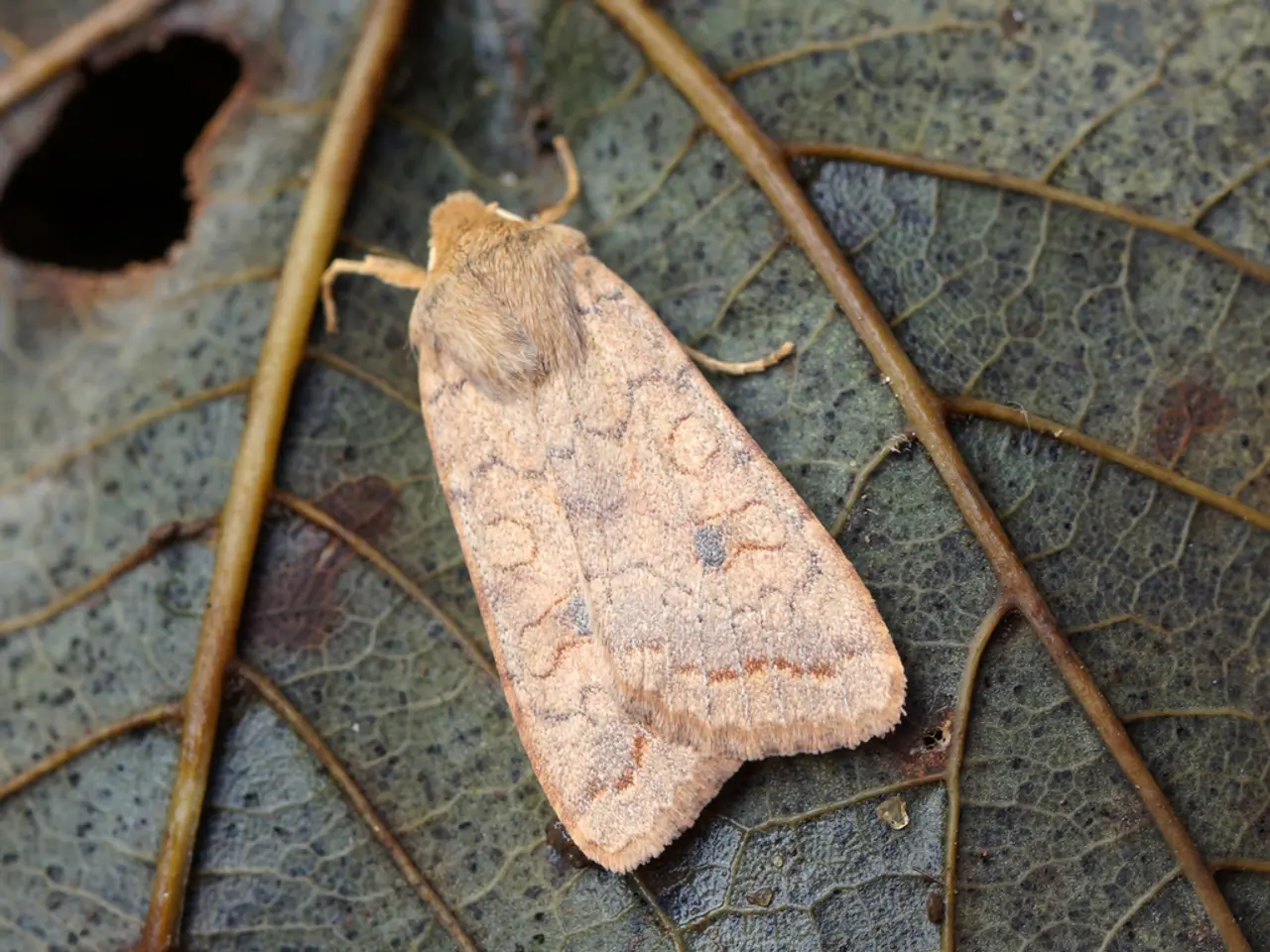Signs, Symptoms, and Remedies: Understanding Cellulitis Caused by Insect Bites
In the realm of skin infections, cellulitis is a common concern, especially after a bug bite or sting. This article aims to shed light on the progression, treatment, and prevention of cellulitis from bug bites and other skin breaks.
Cellulitis typically begins as localised redness, swelling, warmth, and pain around the bite site. If left untreated, the redness may spread, and the infection can worsen, potentially leading to skin necrosis or abscess formation. In contrast, cellulitis from other skin breaks like cuts, abrasions, or surgical wounds develops when bacteria enter through the skin barrier and proliferate, causing similar symptoms. The main difference is that bug bites can sometimes cause additional localised reactions or secondary complications specific to the bite, such as venom-induced tissue damage or allergic reactions, which can exacerbate the cellulitis progression.
Regardless of the source, if symptoms such as fever, chills, or body aches develop, it may indicate a systemic infection requiring urgent care.
The cornerstone of cellulitis treatment, whether from a bug bite or other skin breaks, is the use of appropriate antibiotics targeting common pathogens, mainly beta-hemolytic streptococci and Staphylococcus aureus. Mild non-purulent cellulitis can often be managed with oral antibiotics and outpatient care with close follow-up to monitor progression. Purulent cellulitis with abscess formation requires incision and drainage in addition to antibiotics. In the case of cellulitis from spider bites, special attention is needed if there is necrosis or a spreading infection because venomous bites can cause more severe tissue damage, which may require urgent intervention beyond antibiotics alone.
Monitoring includes marking the erythema border and reassessing within 48-72 hours to ensure improvement or identify worsening infection. It's essential to complete the full course of antibiotics prescribed by a doctor to prevent the infection from returning.
To avoid bug bites, people can use bug spray, wear loose-fitting clothes that cover the arms and legs, and use screens around picnic tables and tents to prevent bugs from entering. If a bug bite occurs, promptly washing the area, using an ointment, covering the bite with a bandage, keeping it clean, avoiding scratching, watching for signs of infection, and using ice packs to reduce swelling can help prevent the onset of cellulitis.
In severe cases, a person may need to take stronger antibiotics or stay in the hospital for monitoring. Any type of cut can potentially lead to cellulitis, so it's crucial to follow the same steps when you have any cut, scrape, or break in the skin that could become infected.
People should seek immediate medical attention if they have symptoms spreading rapidly, a fever, chills, swollen glands, or severe pain. People with compromised immune systems, diabetes, and those who already have these bacteria on the skin are more likely to develop cellulitis.
Signs of cellulitis around a bug bite or sting may include swollen, inflamed skin, skin tenderness or pain, skin that is warm to the touch, spots or streaks surrounding the bite, and skin dimples around the bite. Several types of bacteria may cause cellulitis, including Streptococcus and Staphylococcus aureus. People should seek medical advice as soon as possible if they suspect they have cellulitis, especially if they have a compromised immune system.
In conclusion, while cellulitis from bug bites behaves similarly to cellulitis from other skin breaks, it may have additional complications requiring more urgent or specialized care. The fundamental treatment approach with antibiotics and monitoring remains consistent across sources. Prompt treatment is crucial to prevent the infection from spreading and causing more severe complications.
- Aq person should be aware that cellulitis, often occurring after a bug bite or sting, can spread and worsen, potentially leading to severe conditions like skin necrosis or abscess formation.
- Eczema, a chronic skin condition, should not be mistaken for cellulitis, as the symptoms are different despite both causing itchiness.
- In the realm of mental health, bipolar disorder, characterized by mood swings and depression, is a complex medical-condition that requires scientific understanding and therapies-and-treatments.
- A certain type of skin cancer, also known as melanoma, can manifest itself in the form of a changing mole or a new spot on the skin.
- For those suffering from chronic diseases like cancer, it is crucial to maintain eye-health through regular check-ups and healthy lifestyle choices like fitness-and-exercise.
- Climate change, an environmental-science concern, has far-reaching implications on health-and-wellness, including allergy seasons, respiratory-conditions, and digestive-health issues.
- Hearing impairments, although not directly related to skin conditions, are a common chronic-disease that can impact a person's quality of life, much like some autoimmune-disorders.
- Aq skin-care routine should include protection from the sun, hydration, and proper cleaning to prevent conditions like cellulitis.
- Neurological-disorders, such as Parkinson's disease or multiple sclerosis, can cause a range of debilitating symptoms that affect mobility and mental function.
- In the world of space and astronomy, scientists are studying the effects of zero gravity and radiation on the human body, including potential impacts on cardiovascular-health.
- Predictive science plays a vital role in diagnosing and managing conditions like cancer, as it can help identify potential risks, treatment options, and outcomes.
- Medical-records, a valuable tool in healthcare, should be handled with care to ensure patient privacy and confidentiality, much like stewardship of the planet is crucial for addressing issues like climate-change.
- Therapies-and-treatments like cognitive-behavioral therapy can help manage mental-health conditions like depression, just as antibiotics are essential in treating cellulitis.
- Environmental factors, such as pollution and temperature, can affect both physical health and mental health, making environmental-science an essential area of study for today's world.
- The health-and-wellness industry, encompassing fitness-and-exercise, skincare, and various therapies, has grown significantly in recent years, reflecting society's increasing focus on holistic health.




